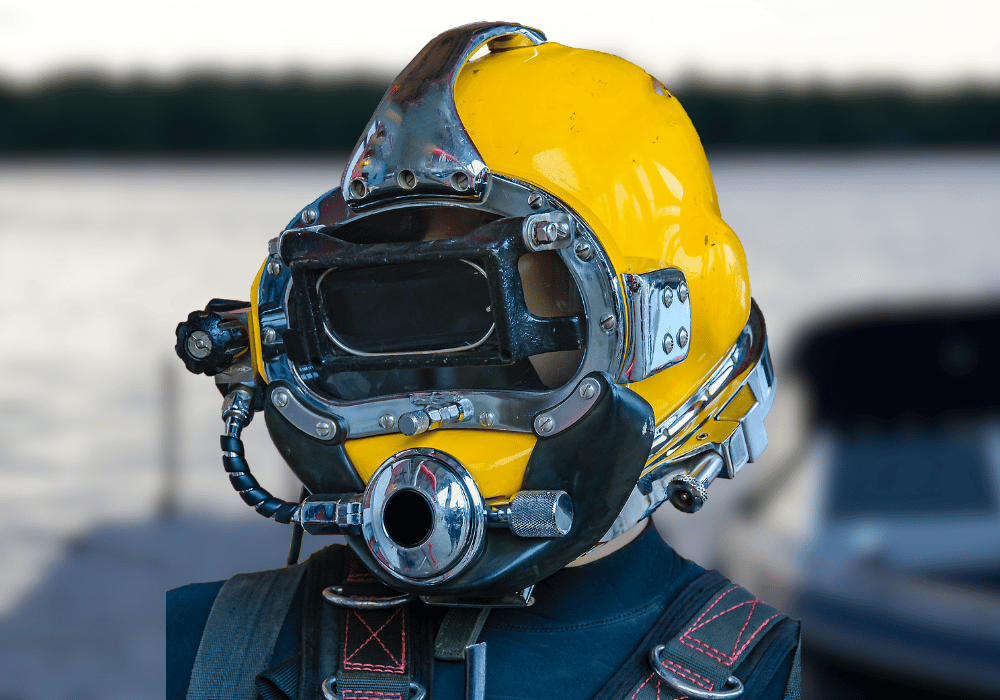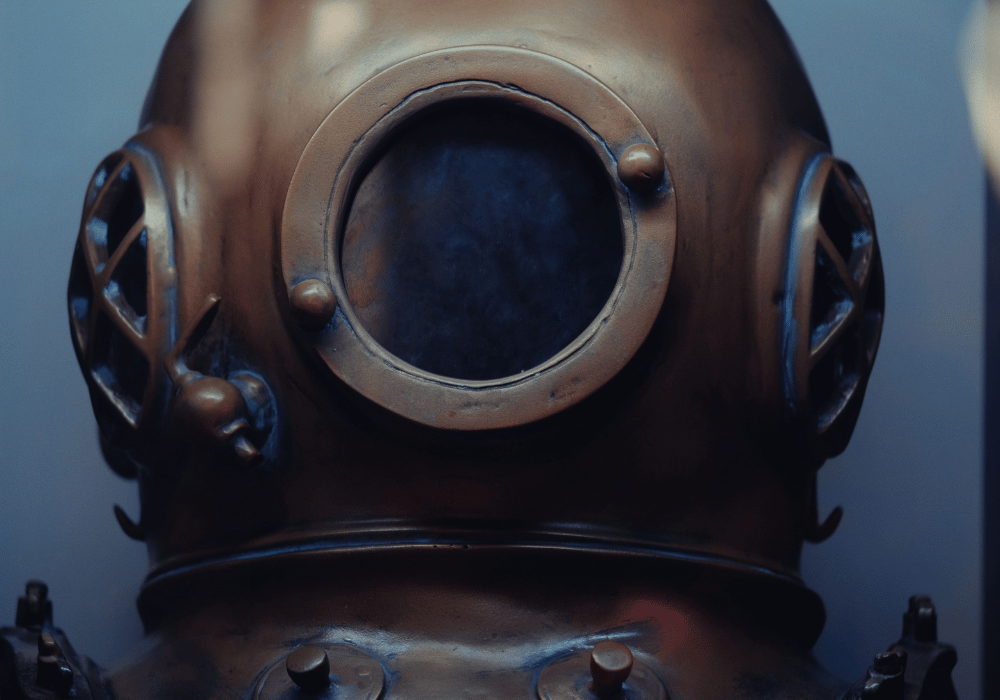Shop Online

When you first start scuba diving, the list of essential gear can seem endless. Fins, mask, regulator—these are the items every new diver learns about. But as you venture into more specialized types of diving, you’ll encounter additional equipment designed for safety and efficiency. One such piece of gear is the dive helmet. For certain underwater environments, like commercial or public safety diving, a scuba helmet isn’t just an accessory; it’s a crucial piece of protective equipment. This guide will walk you through the basics of what a dive helmet is, the different types available, and how to choose the right one for your diving needs.
A dive helmet is more than just head protection; it’s an integrated system that can supply air, facilitate communication, and shield you from hazards. The world of diving helmets can be broken down into a few main categories, each suited for different applications and environments. Understanding the distinctions between them is the first step in selecting the right scuba helmet for your adventures.

When you picture a deep-sea diver, you might imagine the classic, heavy-duty “copper collar” helmet. While modern versions are far more advanced, the core concept of a surface-supplied helmet remains. These standard dive helmets are typically used in commercial diving, where a continuous air supply from the surface is necessary. They are robust, offering maximum protection against impacts from underwater structures or debris. These helmets form a complete seal around the diver’s head and are often secured to a neck dam or a full diving suit, creating a dry and controlled environment for the diver. This design makes them ideal for long, demanding jobs in challenging conditions.
A popular alternative for both recreational and professional divers is the full-face mask helmet. This design integrates a full-face mask directly into a protective helmet shell. Unlike the standard helmet, it covers the entire face, providing an excellent seal and a wide field of view. This type of diving helmet allows divers to breathe through their nose or mouth, which many find more comfortable than a traditional regulator mouthpiece. They also offer the significant advantage of being able to house communication systems, making them a top choice for technical divers, underwater photographers, and public safety divers who need to stay in constant contact with their team.
For divers who need head protection without the bulk of a traditional commercial helmet, lightweight helmets are an excellent option. These are often used in situations like cave diving, wreck penetration, or search and recovery operations where the primary risk is bumping your head against overhead environments. These helmets are more streamlined and do not have an integrated air supply, and are instead worn over a standard scuba mask and regulator setup. Their main purpose is to provide impact protection while maintaining the diver’s mobility and peripheral vision, making them a practical piece of scuba gear for recreational divers exploring complex underwater sites.
Selecting the right dive helmet involves more than just picking a style. Several critical factors will influence your safety, comfort, and overall experience underwater. A properly chosen diving helmet becomes a seamless extension of your gear, allowing you to focus on the dive itself.
A poorly fitting dive helmet can be a major distraction and even a safety hazard. It’s essential that the helmet fits snugly without creating pressure points. Most modern helmets come with adjustable internal harnesses and padding to allow for a customized fit. Before purchasing, you should measure your head circumference and consult the manufacturer’s sizing chart. Remember that you might be wearing a hood underneath, so account for that extra layer. An uncomfortable helmet can cut a dive short, so prioritizing a comfortable and secure fit is non-negotiable.

Your ability to see clearly underwater is paramount. Different dive helmets offer varying fields of view. Full-face mask helmets, for instance, are often praised for their wide, unobstructed sightlines, which are a significant improvement over traditional masks. When evaluating a helmet, consider the size and shape of the faceplate. Look for models made from high-quality, scratch-resistant materials that won’t fog easily. Good visibility not only enhances the enjoyment of your dive but is also a critical safety factor, allowing you to be more aware of your surroundings.
For many types of technical and professional diving, the ability to communicate with the surface or other divers is essential. Many full-face mask helmets and standard dive helmets are designed to accommodate underwater communication systems. These systems can range from simple voice-activated setups to more advanced hardwired units. If communication is a key requirement for your type of diving, ensure the helmet you choose is compatible with the necessary electronic components. Clear and reliable communication can be a lifeline in complex or emergency situations.
Modern dive helmets come with a range of safety features designed to protect you in an emergency. A crucial feature to look for is an emergency gas supply (EGS) connection. This allows you to plug in a separate, independent air source, like a pony bottle, if your primary air supply fails. Other safety aspects include a secure locking mechanism to prevent the helmet from accidentally coming off and robust construction to protect against impacts. Always review the safety certifications and features of any diving helmet before making a purchase.
Proper maintenance is key to ensuring your dive helmet remains a reliable piece of life-support equipment. After every dive, rinse the helmet thoroughly with fresh water, paying close attention to any moving parts, seals, and the faceplate. Allow it to air dry completely out of direct sunlight. Regularly inspect the seals and gaskets for any signs of wear, cracking, or deterioration, as a compromised seal can lead to dangerous leaks. Store your helmet in a cool, dry place, preferably in a protective case, to prevent damage. Following the manufacturer’s specific maintenance schedule will extend the life of your scuba helmet and ensure it performs flawlessly when you need it most.
Choosing the right dive helmet is a significant decision that directly impacts your safety and comfort underwater. By understanding the different types available and carefully considering factors like fit, visibility, and safety features, you can select a helmet that meets your specific diving needs. Whether you need the robust protection of a standard helmet for commercial work or the streamlined design of a lightweight helmet for exploring caves, the right equipment makes all the difference.
Ready to take the next step in your diving journey? Explore our selection of dive helmets and other essential diving gear at Benthic Scuba. If you have any questions or need expert advice on choosing the perfect scuba helmet, don’t hesitate to contact us today. Our team is here to help you dive safely and confidently.
